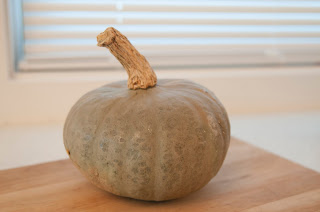Greetings, growers! My name is Emily Rose Haga, and I manage the tomato and pepper breeding programs here at Johnny's, along with my breeding team.
In both programs, we are focused on creating special, new varieties for market growers that combine heirloom flavor and quality with specific traits that improve adaptation to variable growing conditions.
It can be challenging to grow these warm-season, heat-loving crops organically, and in short-season growing conditions like ours in Central Maine, but by breeding varieties directly under such conditions for traits like earliness and disease resistance, we can help direct evolution towards development of crop varieties that are more resilient under these conditions.
This is the most exciting time of year for my team (and most of us on the research farm), because much of what we do the remainder of the year revolves around the crops and analysis that are now coming to fruition.
The tomato and pepper programs really come to life after the plants are in the ground. Early in the growing season, we are in the field, placing pollination barriers over plants to prevent undesired cross-pollination; rogueing off-types from our seed-increases; and sampling leaf tissue to help us identify disease-resistant plants.
Later in the season, once the crops mature (August–September), is prime time for evaluations. You will find us rating the crops and taking notes, harvesting fruit for yield, flavor or other sensory qualities, and flagging individual plants for possible seed harvesting.
In August we welcomed the Fifth Annual Student Organic Seed Symposium (SOSS) to Johnny's for a full-day tour. (That's me, crouched next to the pepper plants, intently discussing our trials!)  |
| » Read more about the SOSS here |
Late summer is also when the trials we've placed with university and farmer-cooperators across the country begin to mature. These are on-farm trials of our new, experimental varieties, designed to determine how they perform in different regions and collect valuable, real-world feedback from growers to inform our breeding and commercialization decisions. This year I'm visiting some of our trials in Maine, Connecticut, New York, Wisconsin, Oregon, and California — and enjoy seeing how things look!
In the off-season, we stay busy analyzing information from prior seasons, coordinating the logistics of our new product introductions, and preparing for the next growing season. A significant part of what we do to prepare involves operating a year-round breeding greenhouse to create seed for testing. My team carries out thousands of hand pollinations in the spring and winter months to make new test crosses, develop breeding populations, and increase trial seed for the following season. Having the ability to do this counter-seasonally in Maine is a big asset for our program, because it affords us an extra crossing cycle per year and speeds up the breeding process, which on average takes 8 to 10 years from start to finish.
| Breeding Technician Brett Johnson, busy in the greenhouse with one of many tasks required to bring our on- and off-site breeding nurseries to life during the growing season... |
Bearing in mind that classical plant breeding is a slow-going, long-term process of directed evolution, Rob Johnston and Janika Eckert deserve continued our recognition for their mark on these programs, which will continue to show up for many years to come. It's an honor to have inherited their breeding programs, and I'm excited to continue their fine work, as well as embark on my own creative projects — which are now beginning to take root! I look forward to sharing our work with you as we continue to introduce outstanding varieties to our offerings.
Senator Scott Cyrway, representing Maine Senate District 16, recently visited and presented Johnny’s Selected Seeds with a certificate of congratulations from the people of Maine. |
From L to R: Brett Johnson, Rob Johnston, Aneta Jacobs, Janika Eckert, Sen.Scott Cyrway, Emily Rose Haga
The certificate reads:
|



















